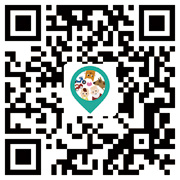Smart wearable devices are still in their infancy, and many companies are starting to make a move. Since 2013, the mobile smart wearable market has gradually warmed up, various types of products have emerged, and the application fields have expanded. However, the industry is still in its infancy, the product scale is limited, the software and hardware patterns are fragmented, and the consumer market has not yet started on a large scale. Many manufacturers have entered the field since 2013, including Google, Apple, Sony, Samsung, Pepple, Nike, Jawbone, Hangtong, Shanda Shell, Yingqu Technology, and other domestic and foreign companies, and have launched smart glasses, smart watches, Smart bracelets, smart shoes and other products.
As early as 2014, smart wearable devices have become hotspots for technology products. Samsung and Sony have launched new products such as smart bracelets and new-generation smart watches in addition to the original smart watch products. Other ICT manufacturers have followed suit. Intel has released a variety of products, including smart watches, smart earphones, smart headsets, etc. Epson, Lumus and other smart glasses products, domestic Huawei, ZTE, Xiaomi, Baidu, Qihoo, Hangtong, etc. Smart terminal manufacturers and Internet companies have also begun to follow up on smart watches, smart bracelets, smart glasses and other product areas, and more companies are beginning to force smart wearable devices.
Smart wearable devices have not yet formed a situation similar to the oligopoly in the field of smart phones, showing diversified development. Wearable devices have various forms and fragmentation features. In addition to mainstream wearable products such as wristbands, watches, and glasses, smart wearables, shoes, gloves, school bags, crutches, jewelry and other innovative wearable products are also emerging. The application scenarios and scope of use are infiltrating into other industries such as clothing, home, car, pet, security, etc., presenting new ideas for more diversified development. The advantages of each company's products for different forms are different, leading to a situation in which the market is divided.
It is estimated that global smart watch sales will reach 141 million in 2018, the industry will reach 19 billion US dollars, and by 2019, smart watch sales will reach 53.2 billion US dollars, which is a potential market. Currently, there are fewer applications for smart wearable devices. Different from the needs of users of smart phone products, all kinds of smart wearable products are oriented to different market segments, so the ecosystem of smart wearable applications is severely fragmented, which is one of the reasons why there are fewer wearable applications. It becomes very difficult for developers to develop applications for these environments, and time and effort costs are greatly increased, and applications are the key to the development of smart wearable devices.
In addition, some killer applications are essential for the popularity of wearable devices. While many wearable apps are still like extensions for smartphone and tablet apps, wearable apps need to break this model and develop apps for things that smartphones can't. Future wristband devices that occupy a significant market share in smart wearable devices will generate killer applications in the health and fitness category, a widespread use of smart wearable devices that will help drive the adoption and application development of smart wearable devices.

For any questions, feel free to send us your feedback, we will get back to you a.s.a.p.